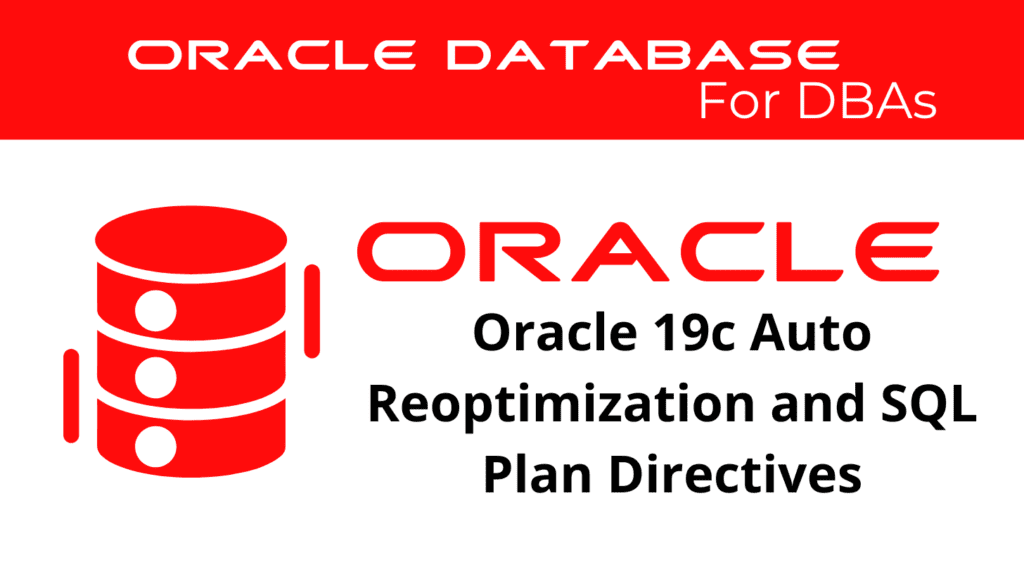
SQL Plan Directives are essential for optimizing database performance in Oracle 19c. By understanding and managing these directives, along with Automatic Reoptimization, database administrators can ensure efficient query execution and improved resource utilization. SQL Plan Directives and Automatic Reoptimization strategies are pivotal in maintaining system efficiency.
SQL Plan Directives
SQLPlan Directives allow Oracle to automatically collect additional information to improve the accuracy of SQL execution plans. These directives help in optimizing SQL statements by providing the optimizer with better statistics and execution paths.
Key Features of SQL Plan Directives
Automatic Information Collection: SQLPlan Directives gather information that helps in optimizing SQL execution plans. Enhanced Plan Accuracy: They improve the accuracy of execution plans by providing the optimizer with more precise statistics. Reduced Manual Tuning: SQLPlan Directives reduce the need for manual SQL tuning by automating the collection of optimization data.
📢 You might also like: Oracle 19c: How Statistics Influence the Optimizer (Category: Performance Management and Tuning)
Enabling SQL Plan Directives
To enable SQL Plan Directives in Oracle 19c, use the following commands:
ALTER SYSTEM SET OPTIMIZER_USE_SQL_PLAN_DIRECTIVES = TRUE;
This command ensures that SQL Plan Directives are enabled for the entire system.
Monitoring SQL Plan Directives
You can monitor SQL Plan Directives through Oracle Enterprise Manager or by querying dynamic performance views such as V$SQL_PLAN_DIRECTIVE and DBA_SQL_PLAN_DIRECTIVES. These tools provide detailed insights into the effectiveness and usage of Plan Directives, allowing for proactive performance management.
Example query to monitor SQL Plan Directives:
SELECT * FROM DBA_SQL_PLAN_DIRECTIVES;
This query provides information about SQL Plan Directives, including execution details and real-time adjustments.
Automatic Reoptimization
Automatic Reoptimization allows Oracle to adjust execution plans dynamically based on runtime statistics. This feature ensures that SQL statements use the most efficient execution paths, even if initial plans were suboptimal.
Key Features of Automatic Reoptimization
Dynamic Plan Adjustment: Automatic Reoptimization adjusts execution plans based on real-time statistics. Improved Query Performance: It enhances query performance by continually optimizing execution plans. Reduced Execution Time: Automatic Reoptimization reduces execution time by choosing the most efficient paths dynamically.
Enabling Automatic Reoptimization
To enable Automatic Reoptimization, configure the following setting:
ALTER SYSTEM SET OPTIMIZER_DYNAMIC_SAMPLING = 4;
This command ensures that the optimizer uses dynamic sampling to reoptimize execution plans.
Monitoring Automatic Reoptimization
Monitor Automatic Reoptimization using Oracle Enterprise Manager and query dynamic performance views such as V$SQL, V$SQL_PLAN, and V$SQL_PLAN_STATISTICS. These views provide comprehensive data on the application of reoptimization strategies, helping to maintain optimal performance under varying conditions.
Example query to monitor Automatic Reoptimization:
SELECT * FROM V$SQL WHERE OPTIMIZER_MODE = 'ALL_ROWS';
This query provides information about SQL statements that have been reoptimized, including how bind variables and system load affect execution strategies.
Benefits of Monitoring SQL Plan Directives and Automatic Reoptimization
Oracle 19c Monitoring SQL Plan Directives and Automatic Reoptimization provides several benefits:
- Improved Performance: Ensures queries run efficiently under varying conditions.
- Resource Optimization: Optimizes the use of system resources by dynamically adjusting execution strategies.
- Proactive Management: Allows DBAs to proactively manage and troubleshoot performance issues.
Monitoring Oracle 19c SQLPlan Directives involves examining how directives influence the optimizer’s decisions, ensuring that the most efficient strategies are employed. Monitoring Automatic Reoptimization requires understanding how runtime statistics influence execution plans, ensuring that the database remains flexible and efficient.
Best Practices for SQL Plan Directives
To effectively monitor and manage Oracle 19c SQLPlan Directives and Automatic Reoptimization, consider these best practices:
- Regular Monitoring: Continuously monitor execution plans to detect and resolve performance issues early. Use Oracle Enterprise Manager and dynamic performance views to gain insights into execution strategies and make necessary adjustments.
- Use Oracle Tools: Utilize Oracle Enterprise Manager and dynamic performance views for comprehensive monitoring. These tools provide real-time data and historical analysis, enabling DBAs to track performance trends and make informed decisions.
- Educate Team: Train the database team in understanding and managing SQLPlan Directives and Automatic Reoptimization. Ensure that team members are familiar with the tools and techniques used to monitor and adjust execution plans.
- Keep Statistics Updated: Regularly gather and update statistics to help the optimizer make accurate decisions. Accurate statistics are crucial for the optimizer to choose the best execution strategies.
Additional Tips
- Implement Automation: Use automation tools to streamline the monitoring and adjustment processes. Automated tools can alert DBAs to performance issues and suggest optimal adjustments.
- Conduct Regular Audits: Periodically audit execution plans and performance metrics to identify long-term trends and areas for improvement.
- Engage in Continuous Learning: Stay updated with the latest Oracle updates and best practices. Continuous learning ensures that the team is equipped with the latest knowledge and techniques.
Conclusion
Oracle 19c’s capability to monitor SQL Plan Directives and Automatic Reoptimization is crucial for maintaining optimal database performance. By leveraging these tools and strategies, database administrators can enhance SQL performance, ensure efficient resource utilization, and proactively address performance issues. Following best practices in monitoring and managing execution plans will help maintain a robust and efficient Oracle 19c environment.
Regular monitoring, proactive management, and continuous learning are essential components of effective database administration. By adopting these practices, organizations can ensure that their Oracle 19c databases operate at peak efficiency, delivering reliable performance even under varying workloads.
See more on Oracle’s website!
Be Oracle Performance Management and Tuning Certified Professional, this world is full of opportunities for qualified DBAs!





